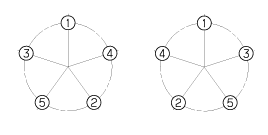IM, the degree of ease to undertake some basic maintenance of the brakes has encouraged me to do mine, either this weekend or next as a pre-winter check. Plan to do front and back, and may just tackle cleaning and lubing the pins. Will do the same in spring, but may also go as far as painting the calipers and rotor hats with a either black or silver (TBD).
good to hear man. proud of you!
brake inspections and cleanings should be done every 6 months. brakes are the single most important feature on a car, and yet they are used up until they are worn and failing. i inspect mine every 6 months, and check for potential failures:
leaks(from the brake line)
bulging piston boots (thus the internal piston seal is leaking fluid past)
cracked, worn, failed brake pads
and if i have a friend handy, i also do a brake fluid bleeding procedure(future video)
Actually, your video got me excited to tackle this so I began doing some research on what products to use to clean and to lube the pad guides and the pins.
i didnt film myself lubing the guide pins, (under the advice of ms.imstricken), for the fear of over-confusing rookie DIYers.
the procedure is extremely simple. i almost wish i filmed it.
Lots of opinions but there seems to be a resounding consensus on a product call Sil-Glyde for the pins and pads.
i dont really stress brands. as long as its synethic grease that wont eat up rubber parts, and non lithium which will run and dry up quickly. if you do your brakes every 6 months, the brand wont matter. if someone is the type to only inspect/clean brakes when they have failed after 50k, then maybe that person should take brands into consideration.
Also also heard good things about CRC Brake clean, although split on chlorinated vs non-chlorinated, the latter being safer, but some say less effective.
i use walmart branded brake cleaner. its cheap, and i can use more of it, without it hitting the bank too hard. i'd rather the cheaper stuff, use plenty of it, maybe even a tooth brush - and call it a day. CRC anything is going to be great stuff. but its almost a dollar more than the walmart branded stuff. NEVER USE CARB-CLEANER. ONLY BRAKE CLEANER SPRAY!
Not sure if this should be in a different thread, but wonder if any members have any thoughts or preferences on lube or cleaning products for brake assemblies.
its fine here.
if you want to clean and lube your slider pins: (only remove 1 at a time. one has a rubber plunger, one doesn't. this way you put the correct one back into its respective slot.)
1. find the slider pin, and gently release the rubber boot. its held in by its own force. there is a lip & grove on the slider pin, and the boot has a lip that fits into the grove. do not use any metal tools, as they will tear the boot.
2. once you released the boots grip around the slider pin. gently pull it out, and wipe it down with a lint free rag/paper towel.
(i'd leave the boot as is, and not mess with it. its not worth the potential tear)
3. apply a generous amount of grease. the more the better.
4. re-insert it into the respect slot & push it in & out a few time. you will hear the grease work its way around, and maybe make a few squishing noises. its fine.
5. apply the boot lip over the slider pin, and twist the slider pin to make sure the boot is applied evenly over the slider pin.
(one of the slider pins, has a rubber grommet on the end of it. be gentle, and dont tear it.)
done.











